Tetraethylammonium iodide
- CAS NO.:68-05-3
- Empirical Formula: C8H20IN
- Molecular Weight: 257.16
- MDL number: MFCD00011829
- EINECS: 200-676-9
- SAFETY DATA SHEET (SDS)
- Update Date: 2024-12-18 14:07:02

What is Tetraethylammonium iodide?
Chemical properties
WHITE TO CREAM CRYSTALLINE POWDER
The Uses of Tetraethylammonium iodide
Tetraethylammonium iodide is a quaternary ammonium compound with the chemical formula C8H20N+I?. It has been used as the source of tetraethylammonium ions in pharmacological and physiological studies, but is also used in organic chemical synthesis.
Reagent for conversion of ?,?-enones in TFA to b-iodo ketones in high yield.
Purification Methods
Crystallise the iodide from acetone/MeOH, EtOH/water, dimethylacetamide or ethyl acetate/EtOH (19:1). Dry it under a vacuum at 50o and store it over P2O5. [Beilstein 4 IV 332.]
Properties of Tetraethylammonium iodide
| Melting point: | >300 °C (lit.) |
| Density | 1.5590 |
| Flash point: | 80℃ |
| storage temp. | Keep in dark place,Inert atmosphere,Room temperature |
| solubility | methanol: 0.1 g/mL hot, clear, colorless |
| form | Solid |
| color | White crystalline |
| Specific Gravity | 1.559 |
| PH | pH(50g/l, 25℃) : 4.0~7.0 |
| Odor | Odorless |
| Water Solubility | Soluble in water almost transparency. |
| Sensitive | Light Sensitive & Hygroscopic |
| BRN | 3562649 |
| Exposure limits | ACGIH: TWA 0.01 ppm |
| CAS DataBase Reference | 68-05-3(CAS DataBase Reference) |
| NIST Chemistry Reference | Tetraethylammonium iodide(68-05-3) |
| EPA Substance Registry System | Tetraethylammonium iodide (68-05-3) |
Safety information for Tetraethylammonium iodide
| Signal word | Warning |
| Pictogram(s) |
 Exclamation Mark Irritant GHS07 |
| GHS Hazard Statements |
H315:Skin corrosion/irritation H319:Serious eye damage/eye irritation H335:Specific target organ toxicity, single exposure;Respiratory tract irritation |
| Precautionary Statement Codes |
P261:Avoid breathing dust/fume/gas/mist/vapours/spray. P304+P340:IF INHALED: Remove victim to fresh air and Keep at rest in a position comfortable for breathing. P305+P351+P338:IF IN EYES: Rinse cautiously with water for several minutes. Remove contact lenses, if present and easy to do. Continuerinsing. P405:Store locked up. |
Computed Descriptors for Tetraethylammonium iodide
Tetraethylammonium iodide manufacturer
Tatva Chintan Pharma Chem Limited
1Y
Phone:+917574848533
Whatsapp: +91-7574848533
product: 68-05-3 98%
Anand Agencies
Maharashtra
Phone:91-9075014125
Whatsapp: 91-9075014125
product: Tetraethylammonium iodide
New Products
(S)-3-Aminobutanenitrile hydrochloride 4-Methylphenylacetic acid N-Boc-D-alaninol N-BOC-D/L-ALANINOL Tert-butyl bis(2-chloroethyl)carbamate 3-Morpholino-1-(4-nitrophenyl)-5,6-dihydropyridin- 2(1H)-one Furan-2,5-Dicarboxylic Acid Tropic acid 1-Bromo-3,5-Di-Tert-Butylbenzene S-2-CHLORO PROPIONIC ACID ETHYL ISOCYANOACETATE 2-Bromo-1,3-Bis(Dimethylamino)Trimethinium Hexafluorophosphate 4-IODO BENZOIC ACID 3-NITRO-2-METHYL ANILINE 1-(2,4-DICHLOROPHENYL) ETHANAMINE (2-Hydroxyphenyl)acetonitrile 4-Bromopyrazole 2-(Cyanocyclohexyl)acetic acid 4-methoxy-3,5-dinitropyridine 1-(4-(aminomethyl)benzyl)urea hydrochloride 2-aminopropyl benzoate hydrochloride diethyl 2-(2-((tertbutoxycarbonyl)amino) ethyl)malonate tert-butyl 4- (ureidomethyl)benzylcarbamate Ethyl-2-chloro((4-methoxyphenyl)hydrazono)acetateRelated products of tetrahydrofuran

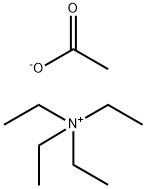
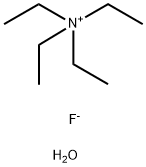

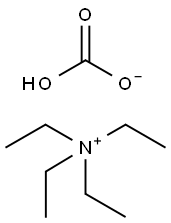

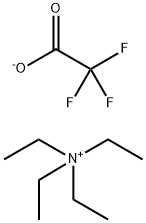
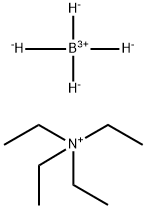
You may like
-
 68-05-3 TETRAETHYLAMMONIUM IODIDE 98%View Details
68-05-3 TETRAETHYLAMMONIUM IODIDE 98%View Details
68-05-3 -
 68-05-3 98%View Details
68-05-3 98%View Details
68-05-3 -
 Tetraethylammonium Iodide extrapure CAS 68-05-3View Details
Tetraethylammonium Iodide extrapure CAS 68-05-3View Details
68-05-3 -
 Tetraethylammonium iodide 95% CAS 68-05-3View Details
Tetraethylammonium iodide 95% CAS 68-05-3View Details
68-05-3 -
 Tetraethyl ammonium iodide CAS 68-05-3View Details
Tetraethyl ammonium iodide CAS 68-05-3View Details
68-05-3 -
 Tetraethylammonium Iodide CAS 68-05-3View Details
Tetraethylammonium Iodide CAS 68-05-3View Details
68-05-3 -
 Tetraethylammonium Iodide CAS 68-05-3View Details
Tetraethylammonium Iodide CAS 68-05-3View Details
68-05-3 -
 Tetraethylammonium iodide CAS 68-05-3View Details
Tetraethylammonium iodide CAS 68-05-3View Details
68-05-3
Statement: All products displayed on this website are only used for non medical purposes such as industrial applications or scientific research, and cannot be used for clinical diagnosis or treatment of humans or animals. They are not medicinal or edible.